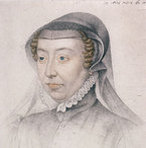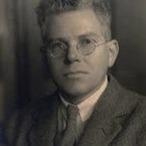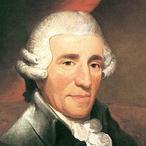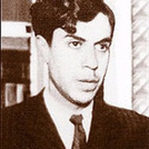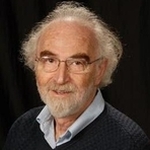|
Having "discovered" the Rosenblatt Recital Series while writing my article on Leggiero Tenor Bogdan Mihai, I decided to attend one of their concerts. The Series of concerts are held in the church of St. John's, Smith Square, in London. The April concert was given by Soprano Elizabeth Llewellyn, and pianist Simon Lepper.
I was interested to learn that Llewellyn’s musical journey has taken her far from the normal route. After her early years of musical training, Llewellyn moved away from the music scene after a bout of illness which affected her voice. She decided to shelve her musical ambitions and embark upon a different career. Even though she “didn’t know one end of a computer from another”, Llewellyn “ended up working for an IT company training sales to sales business people.” Her next move was into the Travel Industry. After one of her colleagues lost his father, and inherited the MD-ship of a Travel Company, Llewellyn was invited to become part of the firm: “He [Llewellyn’s colleague] wanted to explore, or develop further, [the] concert tour side of the business [and] he wanted real musicians to help him do that.” Five years later, Llewellyn was leading a team of research specialists “that wrote special interest tours for long-hall, English Speaking markets coming to the UK and Europe.” So, how did she start singing again? She moved to a part of South London where she did not know anybody, and decided that she would “get involved in the amateur music scene” in order to get to know people. She joined “an amateur Chamber Music group, which...gave a concert once a month, and an amateur Operatic Club which gave ether a concert, or scenes from operas in concert...twice or three times a year.”. One of the music directors at the Operatic Club, said after one of the concerts: “Liz, I’ve got to ask: What are you doing here? Because you really ought to be taking this a lot more seriously than you are.” About a year later, Llewellyn met an operatic conductor with whom she had a consultation, and he agreed that she should be taking her singing further. He put her in touch with the Great Soprano Lillian Watson, one of the best Blonde’s of all time, who became her singing teacher in October 2007, and with whom she still works. A series of successes followed: she was awarded a second scholarship from the Peter Mores foundation in 2008; she completed the ENO Opera Works training programme in March 2009; in the same year she joined Glyndebourne Festival Opera as a chorus member in their productions of Rusalka, Falstaff and L’elisir d’amore; she created the role of Ludovina in the premiere of the Festival’s new opera The Yellow Sofa with the Britten Sinfonia; and in October 2009, she won the inaugural Voice of Black Opera Competition, including the Sir Willard White Award. In 2010 she made her ENO debut with a critically acclaimed performance in the role of Mimi from Puccini’s La bohème. But now, enough of the past: back to the present and her Rosenblatt Recital. Her opening gambit consisted of two very different leading ladies from two very different Handel operas: Alcina and Rodelinda. "Ma quando tornerai" from the opera Alcina, is a fast and furious aria, as the Sorceress Alcina rages at her lost lover: "When you return, your feet in fetters, look only for harshness and cruelty from me." Llewellyn showed her gift for characterisation by exploring fully the different psychological states in the raging “A” section and the melancholic “B” section, where Alcina yearns for her lost love to beg her for mercy. Llewellyn’s second Handel offering was the heartbreaking "Se'il mio duol" from Rodelinda. Here Rodelinda, attempting to rescue her husband from his prison cell, discovers the cell to be empty, and her husband’s bloodstained cloak on the floor. Believing him to be dead, she sings this lament. He is, however, still alive, and has escaped unknown to her. The aria shares one or two musical motifs with that other great lament by a woman for her thought-to-be-dead-but-not lover, "Se Pietà di me non senti" from Giulio Cesare. One of these, the extended ornament on the phrase "mio cor?" in the eighth bar of the Da Capo of "Se'il mio duol", was particularly moving in Llewellyn’s hands. Llewellyn’s phrasing, breath control and uniformity of colour and tone made this a very moving aria. The role of Rodelinda seemed very much suited to her. Even more impressive was her only Mozart piece, the recitative and aria "Susanna non vien!...Dove sono" from Le Nozze di Figaro. Her solid grasp of the text allowed her to act out the recitative brilliantly, particularly her playfulness in the first half of the recitative. Llewellyn's lush Lyric Soprano dealt easily with the aria, moving beautifully through the fluidic rising and falling of the phrases. Her three A5's towards the end of the piece were solid and perfectly centred: an excellent climax to the aria. I look forward to Llewellyn performing the role of the Contessa in Le Nozze di Figaro for Opera Holland Park in this year. I also hope that, in the future, Llewellyn decides to sing the role of Pamina from Mozart's Die Zauberflöte, and in particular the aria "Ach, ich fühl's". Next up on the program was a song cycle, composed by English composer William Walton (29/03/1902 – 08/03/1983), called A Song for the Lord Mayor's Table. Originally performed by Soprano Elizabeth Schwarzkopf and Pianist Gerald Moore at the Hall of the Worshipful Company of Goldsmiths on 18/07/1962, the cycle is set to texts by Blake, Thomas Jordan, Charles Morris, Wordsworth, and two anonymous eighteenth century poets. It was composed for the City of London Festival. In the July of 1970, Dame Janet Baker also performed the song cycle for a recital at Mansion House, with a specially arranged orchestral accompaniment, conducted by George Malcolm. The version performed by Llewellyn was the original 1962 version for voice and piano. I have to say that this kind of music is not to my usual taste. However, Llewellyn's animated and involved presentation made the pieces very enjoyable, and was in fact one of the best parts of the evening’s performance. Two of my friends who were also at the recital, and who find this music more accessible than I do, commented extremely positively on her performance. Her ability to play on the nuances of the language made the cycle all the more entertaining. Thanks to Llewellyn’s performance, I shall explore Walton’s compositions further. My two favourites in the cycle of six songs were "Glide Gently" and "Rhyme". The languid phrases of "Glide Gently" perfectly evoke the evening view of the river at Richmond, where Wordsworth wrote the poem used in the text (though not, perhaps, by Richmond Bridge, where evening revellers sit on the banks enjoying a drink or six). Llewellyn's rich voice created the perfect amount of "body" for the song. "Rhyme", on the other hand, is a very upbeat number, set to the words of the Nursery Rhyme "Oranges and Lemons". Llewellyn's diction was exceptionally clean, and I'm glad she pronounced half-penny as "ha'penny", as any good Londoner should! No mention was made of the "chopper to chop off your head" though. After the interval came the five Lieder by Richard Strauss: my favourite part of the recital. The first was Ständchen, the second part of his Six Lieder, Op. 17. A beautiful piece, with sextet semi-quaver runs on the piano mimicking the sound of bird-song and tinkling fairy-bells; this Serenade cannot but bring a smile to ones face. Llewellyn's well supported pianissimo and sure placement brought a lightness to the main body of the Lied, contrasting with the darker, huskier sound produced in the minor section. Her A#5 was well supported and projected, and the overall result was extremely pleasing. The next two Lied are both from Op. 21. The first, "All' mien Gedanken", is light-hearted, and flutters here and there before focusing finally on the object of desire. The second, "Du meines Herzens Krönelein", is more introspective, yet still light. Llewellyn's ability to move from full voice to the most gentle of touches really enlivens these two Lieder, giving them a substance they might otherwise have lacked. "Nachtgang" or Night stroll, Op. 29, has, for me, one of the most moving lines in Strauss' Lieder: "Und du erscheinst mir wie eine Heilige, mild, mild und gross und seelenubervoll, heilig und rein wie die liebe Sonne". The music for this phrase, in the middle of the Lied, is particularly beautiful. It is a pensive, slightly melancholic remembrance of a transcendental moment, culminating at the G5 on the word "rein" (pure), and it calls for emotional honesty and expression. Llewellyn's moving performance of this piece gave me even more pleasure than her undoubted skill in the more technically demanding pieces, and was the most moving performance of the evening. As if that wasn't enough, Llewellyn chose to end the Strauss-fest with the gorgeous "Allerseelen" (All soul's day) from Op. 10. Everyone who has lost someone close can relate to the phrase "ein Tag im Jahr ist ja den Toten frei. Komm an mein Herz, dass ich dich wieder habe" (one day in the year the dead are free. Come close to my heart, so that I can have you again). The phrase starts on Eb5, drops and rises to F5, drops again and rises to a held G5, then drops again and rises to the climax of the phrase on Ab5. The sincerity of feeling in Llewellyn's treatment of this line was extremely moving, as was her delivery throughout the Lied, and the sound on the G5 and Ab5 was even more powerful than in the operatic arias of the first section. After the Walton and Strauss, Llewellyn moved back to arias, starting with her ENO debut calling card from Puccini's La bohème: "Mi chiamano Mimi". The aria, one of Puccini's most beautiful, is a mix of playful conversation and an intense outpouring of hope and rapturous remembrance. The most beautiful line, "ma quando vien li sgelo, Il primo sole e mio! Il primo bacio dell'aprile e mio!" (but when the thaw comes, the first sun is mine! The first kiss of April is mine!) is, for me, the highlight of the aria. Lewellyn's voice swelled lusciously into the draw-out lines marked “con grande espansione”, and “con espressione intense”, while ebbing tenderly at the end of the phrase. Again, Llewellyn's control of the voice above the stave on the A5's was superb. Her gentle, girl-like intonation of the final recitative-like phrase beautifully contrasted with the power exhibited earlier. It is not difficult to see why Opera Magazine described her voice as "a beautiful full-toned instrument" when reviewing her ENO Mimi. Interestingly, the scene in the opera just prior to this aria was almost completely recreated (with more up-to-date references) in the musical Rent (based on La bohème), as the duet "Light My Candle". The penultimate aria, "Come in quest'ora bruna" from Verdi's Simon Boccanegra, was excellently performed, with Llewellyn's head register soaring up to the top of the range. To end, Llewellyn chose the fabulous "Jewel song" from Gounod's Faust. The lightness of the aria contrasted perfectly with the previous piece, and ended the concert on a high note (literally, with a B5!). The playfulness and exuberance with which Llewellyn infused the performance made this a perfect piece with which to end the concert. The coloratura in this period clearly suiting her vocal style. The climax on the B5 was spot on: powerful and ringing. It brought the house down, and earned her repeated curtain calls. As an encore, Llewellyn sang the beautiful “Sweet Chance”, by English composer Michael Head (28/01/1900 – 24/08/1976). Llewellyn said, when introducing the song, that it spoke of “where [she was] now” in her life and with her music. It beautifully and tenderly sung, with a very deep understanding of the text, and an excellent delivery. It was almost, for me, as moving at the Strauss Leider. (The full text of the song is at the end of the article.) I’m extremely pleased that I came to this recital. Llewellyn has a wonderful voice, and it is not often that one gets to see someone so early in their career with so much maturity and understanding. With her voice in the expert hands of Lillian Watson; with a willingness to get inside her characters and to both vocally and psychologically explore them; and with such a beautiful stage presence I am sure that Elizabeth Llewellyn will be a big name in the future. A list of Elizabeth Llewellyn’s forthcoming projects can be found on her website. The next Rosenblatt Recitalist will be Mezzo-Soprano Serena Malfi, on 11th May 2011. Text for “Sweet Chance” Sweet Chance, that led my steps abroad, Beyond the town, where wild flow'rs grow -- A rainbow and a cuckoo, Lord, How rich and great the times are now! Know all ye sheep And cows, that keep On staring that I stand so long In grass that's wet from heavy rain -- A rainbow, and a cuckoo's song May never come together again, May never come This side the tomb. A rainbow, and a cuckoo's song May never come together again...
0 Comments
Your comment will be posted after it is approved.
Leave a Reply. |
Categories
All
Archives
September 2014
|
MOST VIEWED POSTS
© James Edward Hughes 2013
 RSS Feed
RSS Feed
